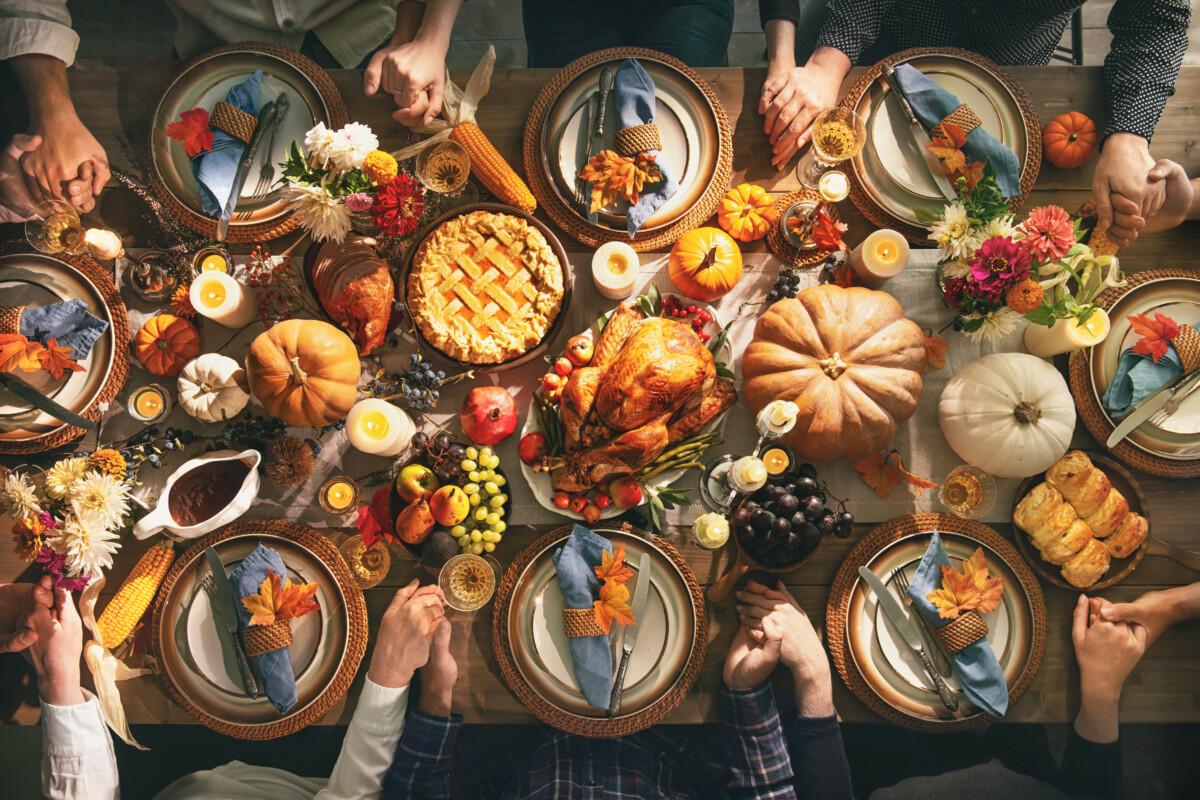Wellness & Education
Diabetics Enjoy Thanksgiving Too!

If there were a “good food” celebration, it would most likely fall on Thanksgiving Day. This is the day when people fill their tables with the best foods their culture and traditions have to offer. Many of these foods, such as stuffing, sweet potatoes, rolls and desserts, are high in carbs. This can make the holiday challenging for anyone who has to watch their blood sugar. Fortunately, there are ways to minimize these challenges so they don’t interfere with the joy of the holiday, even for diabetics.
Here are 10 tips for a diabetic-friendly Thanksgiving:
- If you are the cook, you can control what is served, balancing what your family wants and what is healthy for you to eat. If you aren’t the cook, try to find out ahead of time what will be on the menu. If it sounds like a carb fest, offer to bring a diabetic-friendly dish or two. Be sure to bring your favorites.
- Don’t skip breakfast or lunch on Thanksgiving Day. Saving up your calories for one big meal will wind up making you so hungry that you’ll eat more in the long run. In addition, eating too little early in the day can cause your blood sugar to go too low. Eating too much later can cause it to go too high. If you’ve already had a meal that day, you’ll be more in control when you sit down to the feast.
- When you first arrive at Thanksgiving dinner, take a look at all of the food. Mentally separate dishes into three groups: proteins, carbs and non-starchy vegetables. (Pay attention to sauces and toppings. They can turn a healthy food, such as green beans, into an unhealthy food, such as green beans drenched in a high fat sauce and topped with fried onions.)
- Prioritize what you want to eat. Decide which foods you really like and which ones you don’t. Stay away from the foods you don’t really enjoy eating. This will help cut down on mindless grazing that doesn’t really bring you any pleasure. Focus on the foods that are your favorites.
- Balance your plate. Ideally you should fill half your plate with non-starchy vegetables, a fourth of it with protein and a fourth of it with carbs. If there aren’t enough non-starchy vegetables to fill half your plate, make up the difference with proteins, not carbs. In other words, if you can’t eat more veggies, eat more turkey, not more mashed potatoes. If you limit your carbs and combine the different types of foods, rather than eating carbs alone, the increase in your blood sugar will be slower.
- Fill up with protein and veggies first, then eat your carbs. If you fill up on healthy foods, you will tend to eat less of the unhealthy foods. Also, protein takes longer to digest, so it will make you feel fuller, sooner.
- Drink sugar free beverages and limit your alcohol consumption. When you drink alcohol, combine it with food. Alcohol can lead to a drop in blood sugar. It’s effect on your blood sugar can last for up to 12 hours after consumption. Be sure to keep a closer eye on your blood sugar if you decide to drink. Better yet, ask your healthcare provider about how much alcohol you are able to drink, or if you should drink it at all.
- Check your blood sugar throughout the day. The most common recommendation is to check it in the morning and then two hours after Thanksgiving Dinner begins. Check with your healthcare provider, however, because every patient’s needs are different.
- Exercise is an often-overlooked way to help manage blood sugar. If you can’t leave the family to go for a walk after dinner, try doing some exercise while watching the game.
- Enjoy the holiday. Thanksgiving is a day for spending time with family and for giving thanks. It’s not a day for sticking perfectly to your diet.
